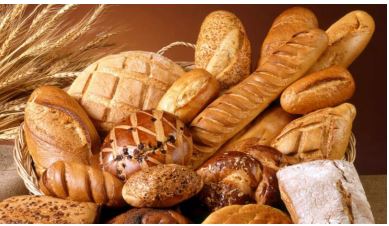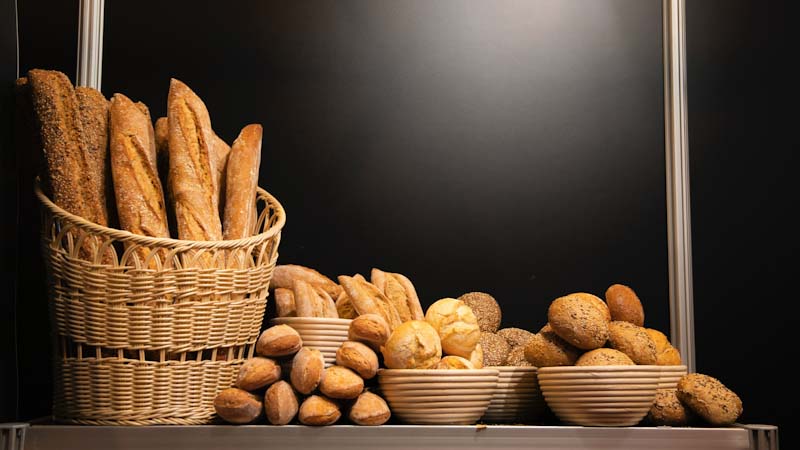Bread Varieties

Bread Types
Bread Types and Fillings Breads of various types form the basis of a sandwich. Each product will have its own specific requirements in terms of preparation and handling. However, all products must be handled in such a way as to:
- avoid bacterial/contamination of the products
- keep products as fresh as possible before sale
- use interesting and appetising flavour and texture combinations
- create presentations that are appealing and inviting to the eye
BREAD VARIETIES
As the world shrinks and we are exposed to more and more diverse cultures, so too are we exposed to many new food options. This being the case there are, today, an enormous variety of breads available.
Breads can be leavened or unleavened – made with yeast or unrisen. Many types of bread are flour-based, but breads can be made from a wide range of base ingredients, including potato.
Some of the varieties of bread available in Australia include (but are not limited to):

- White
- Brown
- Wholemeal
- Multigrain
- Corn
- Herb
- Rye
- Sour dough
- Turkish
- Ciabatta
 Styles of Bread
Styles of Bread
Styles of bread also include sandwich, Cobb (French or Italian), Continental, Vienna, and a wide range of wraps, flatbreads and rolls;
Wraps are very thin flat breads that are used for sandwich wraps, burritos, and tacos. Varieties include:
- Corn tortilla
- Flour tortilla
- Sandwich wraps
- Spinach
- Sun-dried tomato
- Whole wheat
Flat Breads are made from flattened, often unleavened breads and come from around the globe. Common flatbreads that are often used for sandwiches include:
- Pita bread
- Lavash
- Focaccia
- Chapati or Indian flatbread
Buns and rolls are excellent choices for sandwiches. A variety of types of buns can be used for sandwiches and include:
- Hamburger
- Hot dog
- English muffin
Breads can be made from flour, corn, potato or rice and can have many flavourings added such as herbs, onion, olives, garlic, beer, cheeses. All of these bread varieties and styles have their own distinctive texture and taste and will, therefore, influence individual customer choices
